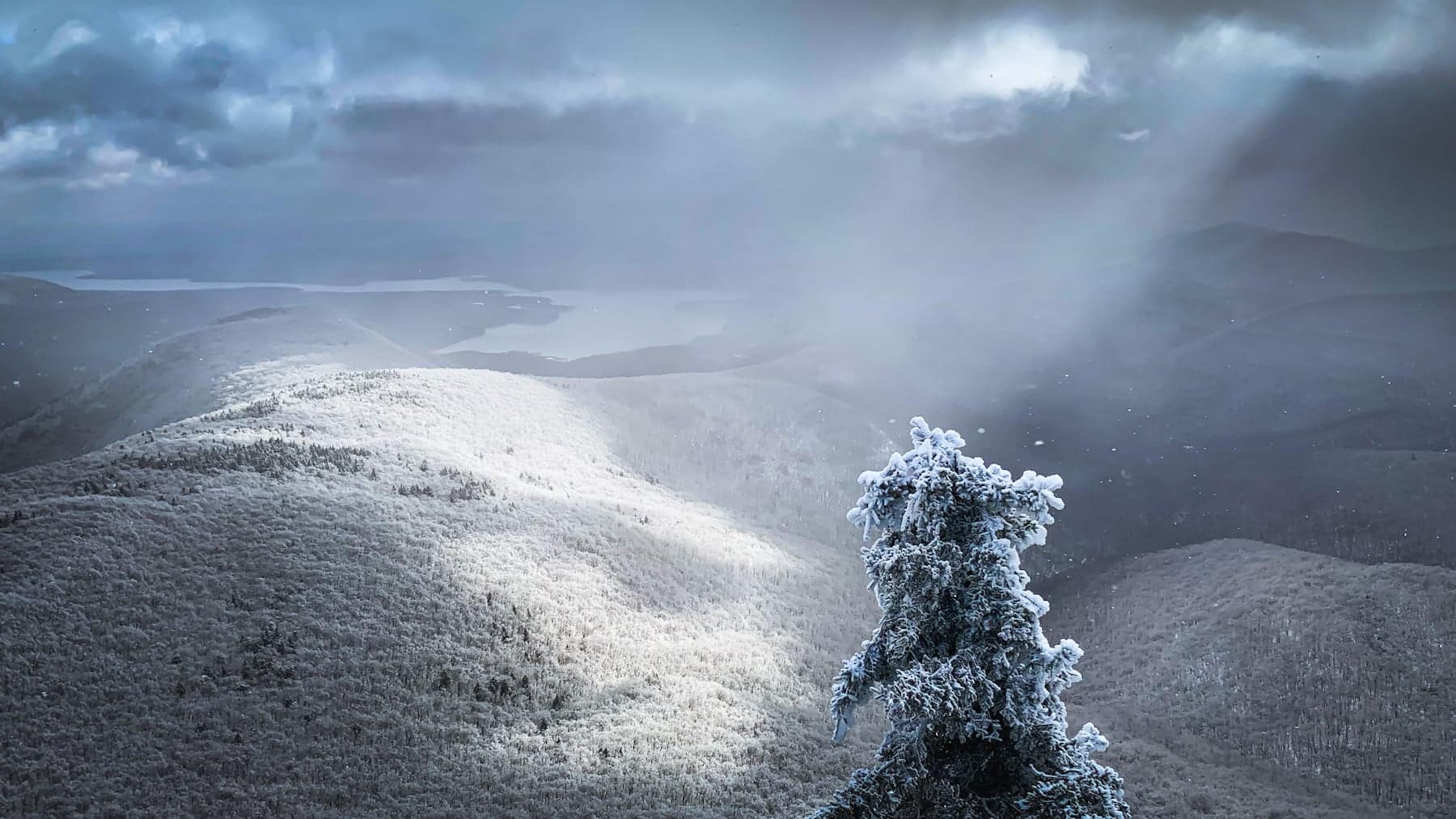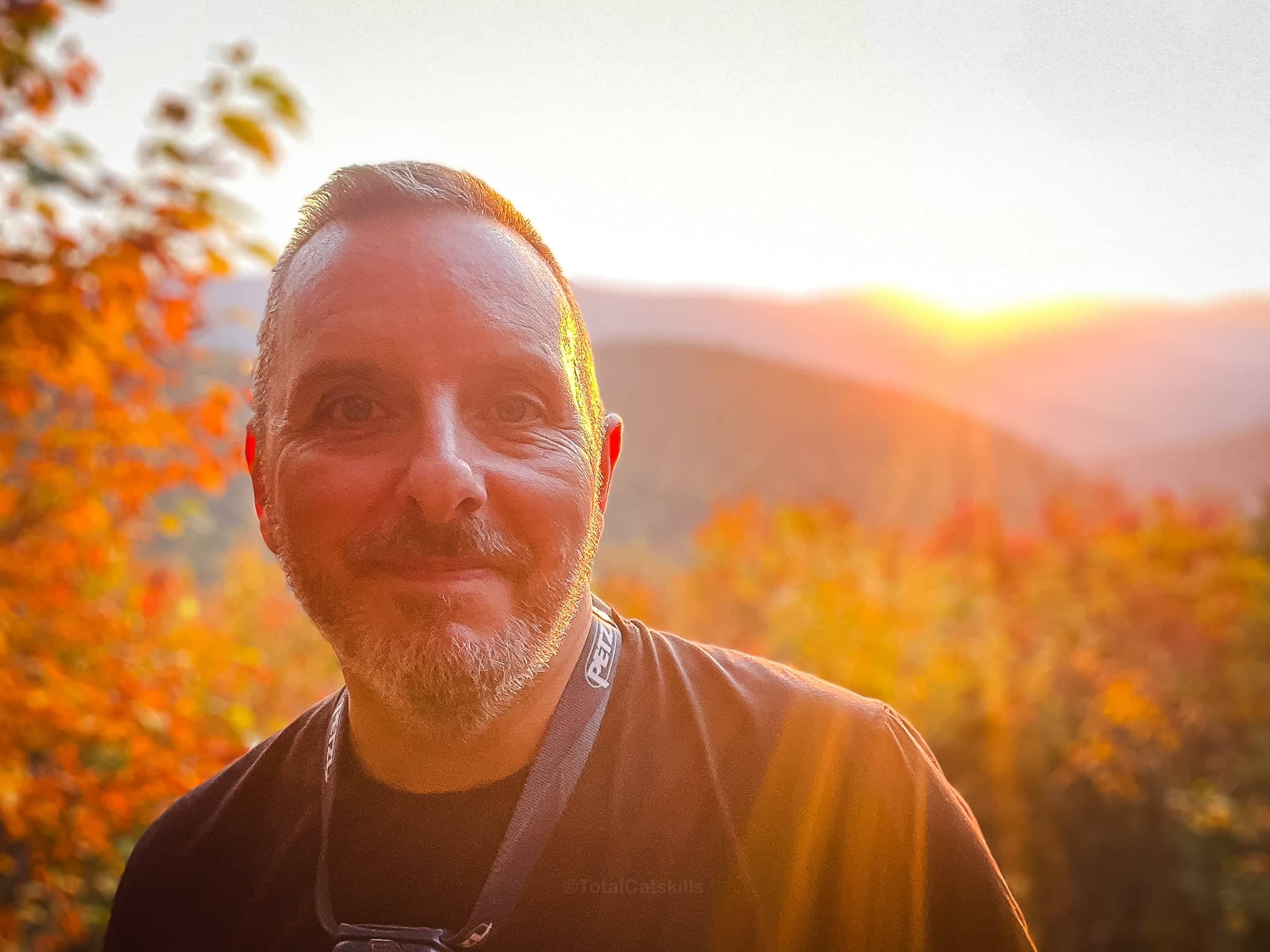Disclosure: This content may contain affiliate links. Read my disclosure policy.
Winter hiking essentials: gear, knowledge, and resources to help you hike the greatest season of them all
From October through April, these winter hiking essentials will keep you hiking safely and comfortably: head, hands, torso, legs, feet and tummy!
Winter Hiking Gear Basics
Winter hiking is potentially deadly. The risks are very real. A mistake may cost you your life.
Make sure you’re up to speed…
- A review of this website’s Wilderness Safety posts will get you started
- Always pack The 10 Essentials
- Check this list of affordable winter hiking gear
- Read Winter Hiking Kit: Survive & Thrive in the Cold
- Make sure you’ve read The 3 Best Ways to Not Die on a Hike
Other resources…
- The DEC have a solid Winter Hiking Safety resource page
- I use mountain-forecast.com to get my weather intel, a crucial part of winter hike prep
More posts to review before you head out…
- Read Winter Lingo — winter trail terms explained
- Read How Windy is Too Windy to Hike?
- Read How Cold is Too Cold to Hike?
- Read It’s a Great Idea to Turn Around When…
Can You Go Hiking in Winter?
Absolutely! It’s by far my favorite season! It does require some extra skills, knowledge, gear and prep. This post will get you started on the right track.
You might also enjoy…
- Challenge › Fire Tower Challenge 2024
- New › Say Goodbye to Blisters
- Follow › Sean’s content on Instagram
- Bugs › Black Fly Season Means Black Fly Bites
- Explore › The Hardest Hikes You Can Do
- Hike More › Catskills, Adirondacks, Hudson Highlands, Gunks, Berkshires
Is Winter Hiking for Beginners?
I don’t recommend that anyone take up hiking as a beginner in the winter. There’s a lot of knowledge and experience needed to hike safely in winter, knowledge that’s best gained in the warmer seasons.
Warning! In winter, on a mountain, the risk of danger is hugely increased and the stakes are way higher. A lack of preparation or knowledge, or a missing piece of gear, could mean death in a very short time.
What Equipment Do You Need for Winter Hiking?
Extra clothing, extra layers, extra traction, extra food and water.
Grab this Free Printable Winter Hiking Gear Checklist. Your winter hiking 10 essentials all in one place. It’s dialed-in for the Catskills but it’s a great jumping-off list for winter-hiking anywhere.

Winter Hiking Gear Essentials: Clothing
For most people, the first problem to solve is how to stay warm and dry on a mountain when it’s well below freezing. On really cold days, my full clothing list might be:
Head & Hands
- Wool hat
- Buff / “neck gaiter”
- Gloves (when it’s not too cold)
- Mittens (when it’s super cold)
- Ski goggles for exposure above treeline, or on very windy days
- All year long, I pack two headlamps — because with headlamps “one is none / two is one“
Torso
- Torso base layer (thin synthetic or wool layer to wick moisture away from skin)
- Synthetic tee shirt
- Mid-layer (e.g. a light fleece jacket)
- Puffy (technical outdoors soft-shell)
- Rain layer (thin, packable)
It’s very rare that I wear all five layers at once. I run hot, so I sometimes just use three layers: base, tee, and puffy.
But I always carry all five layers and consider them all winter hiking backpack essentials.
You might also enjoy…
- Challenge › Fire Tower Challenge 2024
- New › Say Goodbye to Blisters
- Follow › Sean’s content on Instagram
- Bugs › Black Fly Season Means Black Fly Bites
- Explore › The Hardest Hikes You Can Do
- Hike More › Catskills, Adirondacks, Hudson Highlands, Gunks, Berkshires
Legs
- Leg base layer (thin synthetic or wool) — only on very cold days
- Winter hiking pants
- Sock liners (when very cold)
- Wool socks (always)
- Waterproof hiking boots
- Winter gaiters (whenever the snow is deeper than ankle height)
Butt
When you need to sit down for a minute, a hiking sit pad is a great addition to your pack.
Feet
Some people switch to insulated winter hiking boots for winter. If your extremities are sensitive to the cold, this might be a good option for you too.
I hike in my regular waterproof boots, and I feel fine. Everybody hikes their own hike.

Winter Hiking Essentials: Traction
The second problem to solve is traction — how to stay upright in ice and snow.
I recommend three items:
- Microspikes — for when there’s any ice on the trail
- Snowshoes — for snow deeper than 6 inches
- Hiking poles with snow baskets — for added stability, especially on descents
I do not own full mountaineering crampons and, in winter, I do not hike trails where there might be needed. This is where good trail research — using online apps and sites and your hiking community — can save you considerable pain.
Winter Hiking Essentials: Food & Water
Winter hiking is strenuous. You’ll be wearing more clothes and carrying more gear through tougher conditions. You’ll need to consume more calories and make sure your water doesn’t freeze.
- Foods that are calorically dense are always a good bet: nuts and bars, chocolate, jerky, Reeces Pieces (which don’t freeze solid).
- You may enjoy hot soup or tea/coffee in a thermos.
- I’ve always had good luck with my standard water reservoir because I keep the feeder tube blown clear (so it doesn’t freeze up). If the mouthpiece does freeze, I just tuck it inside my winter hiking jacket, close to my body, and it thaws in a few minutes. But some people prefer to switch to Nalgene water bottles tucked in their backpacks. Experiment to find out what works best for you.
Post-Hike Pleasantness
After your hike, try out a few of these 10 Post-Hike Hacks — fantastic ways to treat yourself after a big day. I hope they quickly become part of your winter hiking essentials.
Get full access…
Get instant access to the full version of this site and enjoy great supporter benefits: full galleries, full trail notes, early access to the latest content, and more.
Hot on the website right now…
Follow for more…
Follow my @TotalCatskills content on Instagram for regular hiking inspo and safe, inclusive community.

